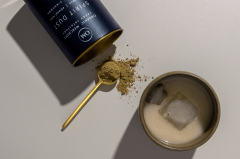Your skin reflects your health. Decode acne, rosacea & more with expert insights on what your skin reveals about your wellbeing.
Beneath its surface, your skin is a vibrant system, constantly reacting, renewing and relaying clues about what’s happening inside and around you. Every breakout, flush of redness or stubborn dark patch has a story to tell — about your body, your environment, your lifestyle and the intricate balance between them. We consulted with two experts, a leading dermatologist and a functional health coach, to take a deeper look into what your skin is trying to communicate through these signals.
Your skin is a window
“In general terms, our skin is a window into our internal wellbeing,” explains Dr Katherine Armour, dermatologist and founder of Bespoke Skin Technology. “For example, excessive sun exposure will manifest as dullness, rough texture, dark spots and wrinkles, while a diet high in refined sugars can accelerate ageing through glycation, leading to loss of plumpness and early wrinkling.” She adds that lifestyle factors such as prolonged stress and lack of sleep also impact the skin, resulting in breakouts, dull complexions and dark under-eye circles.
The skin’s role as an immune organ allows it to respond to both internal and external environments. In terms of our inner terrain, the gut-skin connection is significant. “When the gut microbiome is off, it can trigger inflammation and immune reactions that exacerbate skin problems,” explains Victoria Sissanes, functional health coach and founder of Sana Wellness. “Poor gut health can lead to nutrient malabsorption, impacting essential vitamins and minerals needed for skin health.” She notes that specific internal issues, like thyroid imbalances, also have visible effects, such as dry skin in hypothyroidism and an oily or flushed complexion in hyperthyroidism.
Experiencing any kind of skin concern can be an emotional journey and impact how you feel both physically and psychologically, which is why it’s so important to get to the root cause of skin manifestations. Let’s dive in with our experts’ cheat sheet as a springboard to decoding your skin’s messages when it comes to some of the most common skin conditions.
Acne
Acne often appears along the jawline, cheeks and forehead and, in worse cases, it may be stubborn and deeply rooted. “Acne can be due to a genetic predisposition,” says Dr Armour, where sensitive sebaceous glands respond to normal androgen levels or, in some women, mild elevations due to conditions such as polycystic ovarian disorder.
Stress can elevate cortisol, triggering breakouts, particularly on the jawline and lower face. While the research is still evolving on diet’s role in acne, “highglycaemic index foods … and cow’s milk have been linked to this pattern in small studies”, Dr Armour notes, potentially having a pro-inflammatory effect. Sissanes echoes this, adding that “foods that cause rapid spikes in blood sugar and insulin can increase sebum production and androgen activity,” and low levels of zinc and vitamin A may also contribute to acne.
What you can do: Track dietary factors that seem to coincide with breakouts, consider hormone checks and explore a low-GI diet, which limits dairy and includes zinc-rich foods. Consulting a professional can help tailor an approach that works best for your skin and specific kind of acne.
Rosacea
Rosacea is a chronic skin condition marked by facial redness and visible blood vessels, often triggered by environmental factors. “Rosacea is a very complex skin disorder,” explains Dr Armour, involving genetics, triggers, microbial and immune responses, along with neurovascular dysfunction. An impaired skin barrier is typical in rosacea, with “increased skin pH, decreased hydration and increased transepidermal water loss (TEWL),” Armour adds.
Rosacea has also been linked with gastrointestinal issues, including irritable bowel syndrome (IBS), inflammatory bowel disease and helicobacter pylori infection, contributing to the “gut-skin axis” theory — that shared genetic, microbiota and immune factors may connect gut health and skin health. Sissanes adds that “redness and flushing in skin can be caused from imbalances in the gut microbiome, compromises in gut barrier and alterations in systemic immune response.” According to the experts, rosacea triggers vary but often include sun exposure, spicy foods, alcohol, caffeine, hot drinks and temperature changes.
What you can do: Identifying and avoiding known triggers is key to managing rosacea. Soothe with skincare tailored for sensitive skin and, if relevant, address gut health under professional guidance to explore potential connections.
Melasma
Characterised by dark patches on the skin, melasma is often linked to sun exposure and hormonal changes. “The most important triggers of melasma are exposure to ultraviolet and visible (blue-violet) light,” notes Dr Armour, along with hormonal factors such as contraceptive pills, intrauterine devices and pregnancy. Those who are genetically predisposed to melasma may also find it worsened by skin irritation, making it essential to use gentle topical treatments that won’t inflame the skin further.
What you can do: Daily sunscreen is essential to protect against UV and visible light, and consider gentle, targeted treatments to brighten dark patches. Consulting a dermatologist can also provide advanced options for improving skin tone without irritation.
Eczema
Eczema is a common skin condition characterised by dry, itchy and inflamed patches, often linked to allergies or sensitivities. “The underlying cause of atopic eczema is highly complex,” says Dr Armour, involving a mix of skin barrier dysfunction and immune regulation issues in genetically predisposed individuals. Although eczema is not primarily an allergic disease, it can occur in those with allergies or other atopic conditions like asthma and hay fever. Research suggests a potential link between eczema and gut health, with an imbalanced gut and skin microbiome possibly contributing to the inflammation and immune response associated with eczema.
Sissanes further explains that shifts in gut microbiome composition, especially lowered levels of beneficial strains such as bifidobacterium and lactobacillus, can disrupt the metabolic environment. This affects the production of short-chain fatty acids, which help reduce inflammation and maintain gut integrity. If someone with eczema consumes a highly processed or high-sugar diet, it may encourage harmful bacteria, leading to dysbiosis. This imbalance can trigger inflammation that weakens the skin barrier, making it more susceptible to irritants and allergens.
What you can do: Treat your skin gently with fragrance-free, nourishing moisturisers to support its natural barrier, and avoid products that may cause irritation. Consider targeted probiotic supplements. A professional can provide personalised guidance if flare-ups persist, helping to





